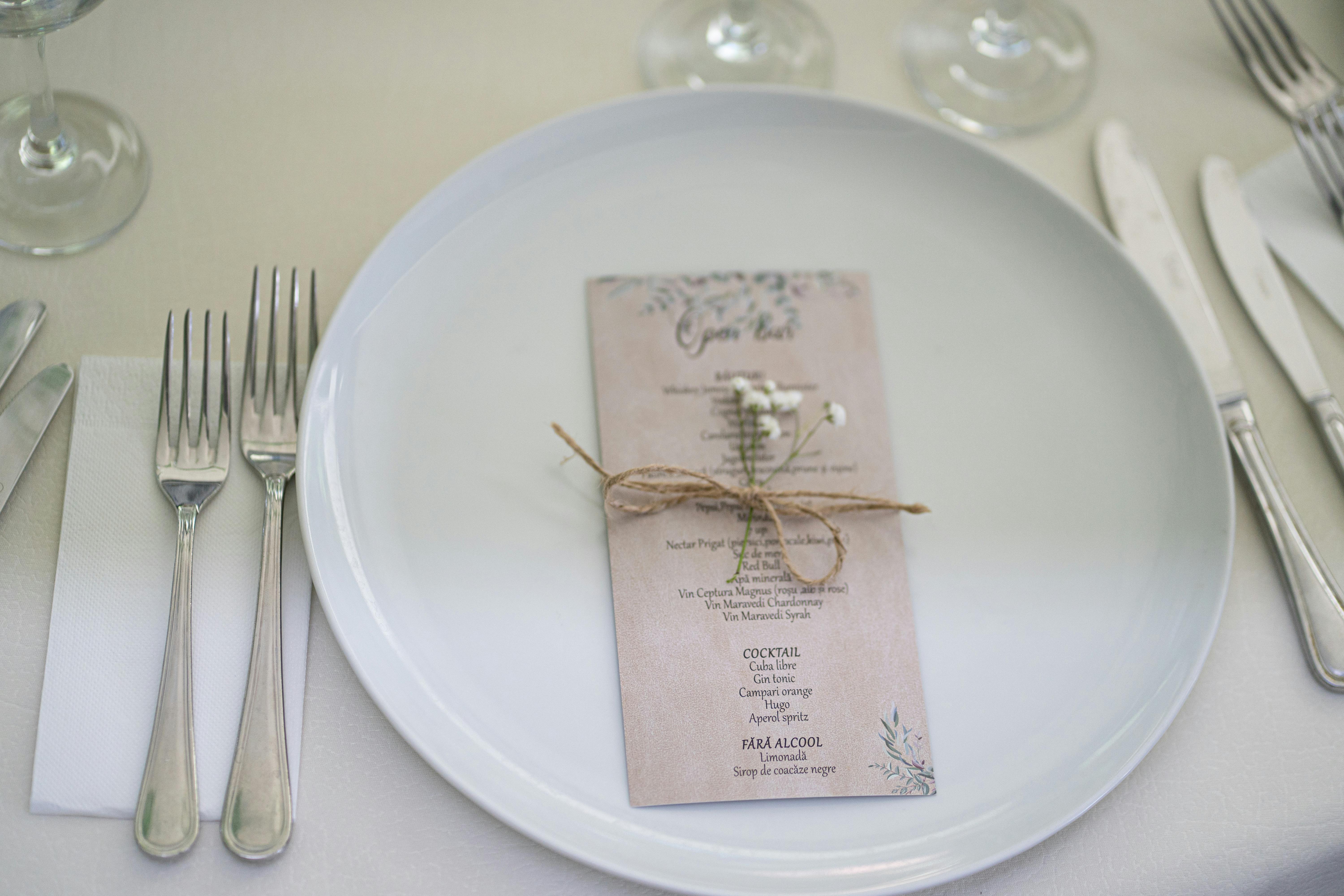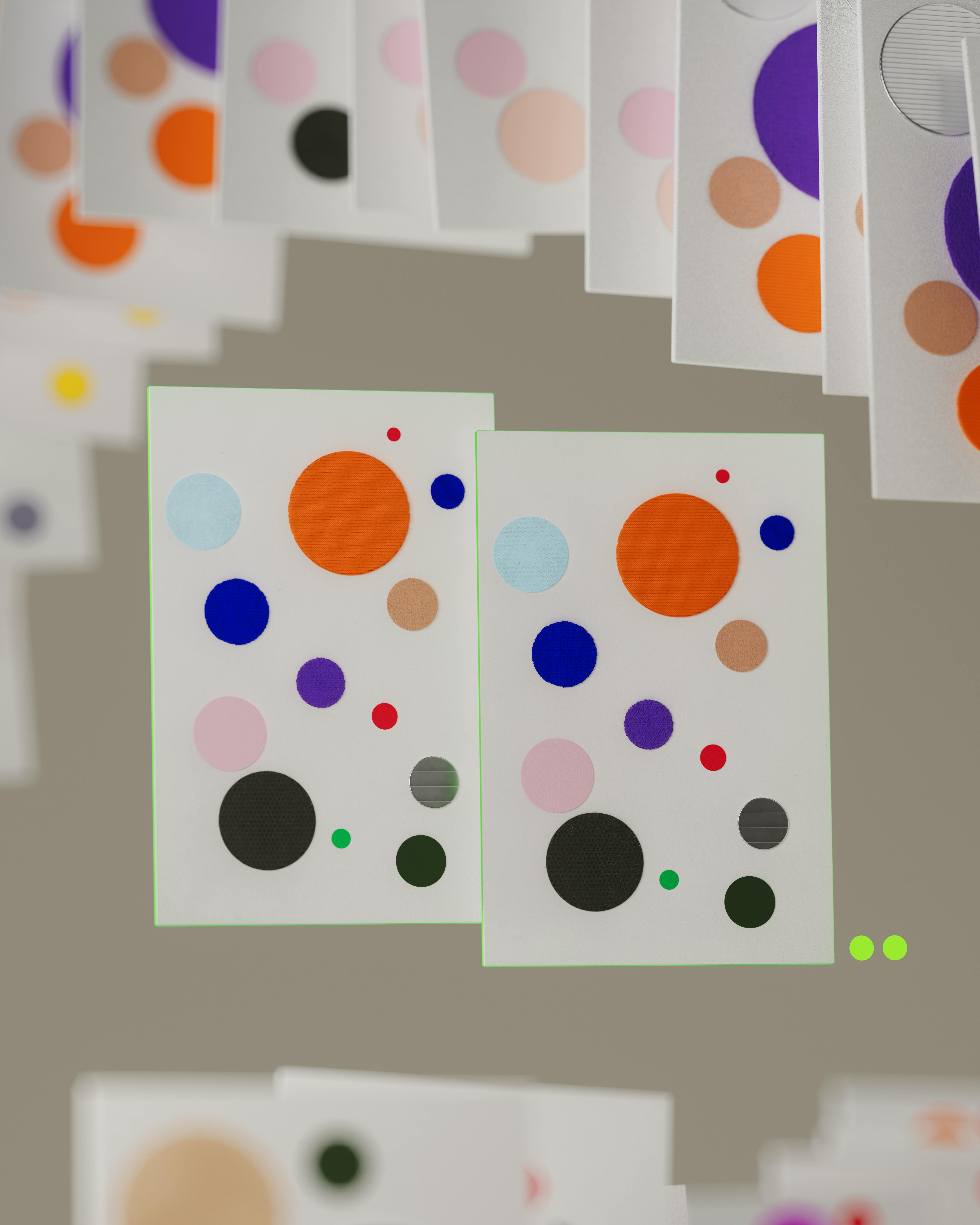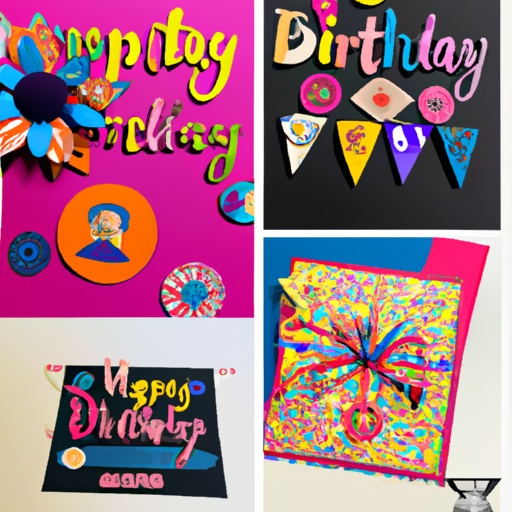Looking for creative ideas to make a memorable birthday card for your loved ones? Look no further! In this article, you will find a collection of unique and charming handmade birthday greeting card ideas that are sure to impress. From personalized messages to intricate designs, these ideas will help you create a truly one-of-a-kind card that will bring joy and love to the recipient. Let your creativity shine and make their birthday even more special with these heartfelt handmade cards!
Understanding Material Options
Paper types
When it comes to creating handmade birthday greeting cards, the choice of paper is crucial. There are various paper options to consider, each with its own unique qualities and textures. You can choose from options like cardstock, textured paper, handmade paper, or even scrapbook paper. The thickness and weight of the paper are important factors to consider, as they determine the durability and stability of the card. Additionally, consider the finish of the paper, whether it is glossy, matte, or textured, as it can greatly impact the overall look and feel of the card.
Adhesives and glues
To ensure that your birthday greeting card stays intact, selecting the right adhesive is essential. There are various types of glues and adhesives available, such as adhesive tapes, glue sticks, liquid adhesives, and double-sided tapes. Each type has its own benefits and is suitable for different materials. For paper-based cards, glue sticks or liquid adhesives work well. However, when attaching heavier embellishments, it is recommended to use double-sided tapes or strong liquid adhesives for better durability.
Embellishments and decorations
Adding embellishments and decorations to your birthday greeting cards can enhance their visual appeal and make them stand out. There are numerous options to choose from, including ribbons, buttons, stickers, sequins, rhinestones, and more. Before selecting the embellishments, consider the theme or design of the card. For example, if you are creating a floral-themed card, using paper flowers or dried petals would be a great choice. Furthermore, ensure that the embellishments are securely attached to the card using appropriate adhesives.
Colored pencils, markers, and paints
Incorporating colors into your birthday greeting cards can bring them to life. Colored pencils, markers, and paints are wonderful tools to add vibrant and personalized touches to the cards. Colored pencils are ideal for detailed coloring and shading, while markers provide bold and vibrant colors. Watercolor paints are a popular choice for achieving a soft and artistic look. Experiment with different techniques, such as blending colors or creating gradients, to make your cards visually appealing. Remember to choose colors that complement the overall theme and design of the card.
Fundamental Techniques
Cutting and folding paper
Knowing how to cut and fold paper properly is essential for creating professional-looking birthday greeting cards. Use a sharp pair of scissors or craft knife to achieve clean and precise cuts. When folding the paper, ensure that the creases are neat and aligned. Practice different folding techniques, such as accordion folds, gate folds, or simple bi-folds, to add visual interest to your cards. Proper cutting and folding techniques contribute to the overall structural integrity and aesthetic appeal of the final card.
Layering elements
Layering elements adds depth and dimension to your birthday greeting cards. It involves overlapping different materials, such as paper, cardstock, or fabric, to create interesting visual effects. Start by choosing the base layer, which can be a colored cardstock or patterned paper. Then, add additional layers by cutting out shapes or frames from contrasting or coordinating paper. Experiment with different textures and patterns to achieve a visually pleasing composition. Use adhesive tapes or glue to secure the layers in place, ensuring a professional and polished look.
Using stencils
Stencils are a great tool to create intricate and consistent designs on your birthday greeting cards. They come in various shapes, patterns, and sizes, allowing you to achieve precise and intricate designs with ease. To use a stencil, place it on the desired area of the card and secure it using masking tape or adhesive. Then, apply paint, ink, or a colored pencil to the cut-out areas of the stencil using a sponge or brush. Once the paint or ink is dry, carefully remove the stencil to reveal the beautifully designed element on your card.
Embossing and hot foil stamping techniques
Embossing and hot foil stamping techniques add elegance and sophistication to your birthday greeting cards. Embossing involves creating raised patterns or designs on the surface of the card using heat and special embossing powders. Hot foil stamping, on the other hand, involves applying metallic or colored foils to the card using heat and pressure. These techniques require specific tools, such as heat embossing pens, embossing powders, heat guns, or hot foil stamping machines. With practice and patience, you can master these techniques and add exquisite details to your cards.

Designing Card Layouts
Choosing a theme
Selecting an appropriate theme is a crucial step in designing birthday greeting cards. Consider the preferences and personality of the recipient when choosing a theme. Whether it’s a floral theme, a sports theme, or a playful theme, ensure that it resonates with the recipient’s interests. A well-chosen theme sets the tone and direction for the entire card design.
Color coordination
Color coordination plays a significant role in creating visually appealing birthday greeting cards. Select a color scheme that complements the chosen theme and creates a harmonious visual impact. Consider using a color wheel as a reference to understand color combinations that work well together. Additionally, consider the recipient’s favorite colors or their significance, as they can be incorporated into the card design to make it more personalized.
Balancing visual elements
Creating a balanced composition is essential to ensure that your birthday greeting card looks visually appealing. Balance the placement of various visual elements, such as images, text, and embellishments, on the card. Use the rule of thirds as a guide by dividing the card into nine equal parts and placing important elements along the imaginary lines or their intersections. Achieving a balance between color, texture, and size of the elements enhances the overall aesthetics of the card.
Utilizing space
Effective use of space is crucial in designing birthday greeting cards. Proper spacing between elements allows each element to stand out and be appreciated individually. Avoid overcrowding the card with too many elements or too much text. Leave enough empty space to create a visual breathing room and to maintain a clean and organized appearance. Utilize negative space intentionally to draw attention towards the focal point of the card.
Pop-up Birthday Greeting Card Ideas
Basic pop-up mechanisms
Pop-up mechanisms add an element of surprise and excitement to birthday greeting cards. There are various basic pop-up mechanisms to explore, such as the box pop-up, the V-fold pop-up, or the parallel fold pop-up. The box pop-up involves creating a three-dimensional box shape that pops up when the card is opened. The V-fold pop-up creates a pop-up element that reveals itself in a V shape when the card is opened. The parallel fold pop-up includes creating parallel folds that create a 3D effect when the card is opened. Experiment with these mechanisms to create interactive and engaging cards.
Creating pop-up characters or objects
Take your pop-up birthday greeting card to the next level by incorporating pop-up characters or objects. You can create paper cut-outs or use pre-made die-cut shapes to represent the characters or objects. Attach them to the pop-up mechanisms, ensuring proper movement and stability. Be creative and explore various themes, such as animals, flowers, cars, or even personalized representations of the recipient. Adding these dynamic elements adds playfulness and surprise to the card.
Ensuring pop-up stability
To ensure that your pop-up birthday greeting card remains stable and functional, it’s important to pay attention to the construction and attachment of the pop-up mechanisms. Use sturdy cardstock or thicker paper for the pop-up elements to provide durability. Reinforce the folds and creases with additional tape or adhesive to prevent them from tearing or weakening over time. Carefully align and secure the pop-up elements to the card base using strong adhesive, ensuring they are firmly attached and can withstand repeated opening and closing.

Quilling Birthday Card Ideas
Understanding quilling techniques
Quilling is the art of creating intricate designs by rolling and shaping thin strips of paper. This technique adds a unique and delicate touch to birthday greeting cards. To start quilling, you’ll need quilling paper strips in various colors, a quilling tool, and adhesive. Roll the strips using the quilling tool to create different shapes, such as circles, teardrops, or coils. Experiment with combining shapes to form flowers, butterflies, or any other design that suits the card theme. Quilling allows for endless possibilities, so let your creativity soar.
Choosing quilling paper
When selecting quilling paper for your birthday greeting cards, consider the thickness, color, and texture of the paper. Quilling paper strips are available in various widths, typically ranging from 1/8 inch to 1/4 inch. Thicker strips create more substantial designs, while thinner strips allow for finer details. Choose colors that complement the overall color scheme of the card. Add texture to your quilling designs by selecting papers with metallic or glossy finishes. Explore different color combinations and textures to add depth and visual interest to your quilled designs.
Creating quilled shapes and patterns
Once you have chosen your quilling paper, it’s time to start creating quilled shapes and patterns for your birthday greeting card. Experiment with different techniques, such as tight rolls, loose coils, or teardrop shapes, to create a variety of elements. Arrange the quilled shapes into desired patterns or designs, such as flowers, borders, or even personalized initials. Adhere the quilled shapes to the card using adhesive, ensuring that they are securely attached. The delicate and intricate nature of quilled designs adds a touch of elegance and sophistication to your handmade cards.
Photo-Centric Birthday Card Ideas
Selecting appropriate photos
Incorporating photos into birthday greeting cards adds a personal touch and creates a sentimental connection. Select photos that hold special meaning for the recipient, such as memorable moments or shared experiences. Ensure that the selected photos are of good quality and resolution, as this contributes to the overall visual appeal of the card. Consider cropping or editing the photos as needed to fit the desired card layout or theme.
Customizing photo appearance
To customize the appearance of the photos in your birthday greeting card, consider using photo editing software or apps. Adjust the brightness, contrast, and saturation levels to enhance the colors and overall visual impact of the photos. Experiment with different filters or effects to create a certain mood or ambiance. Additionally, you can add text overlays or other graphic elements to the photos to further personalize them.
Incorporating photos into card design
Once you have selected and customized the photos for your birthday greeting card, it’s time to incorporate them into the card design. Choose a layout that complements the size and orientation of the photos. You can create a collage of multiple photos or feature a single photo as the focal point. Arrange the photos in a visually appealing manner, considering factors such as balance, symmetry, and proportion. Attach the photos to the card using adhesive or photo corners, ensuring they are securely in place.

3D Elements Birthday Card Ideas
Creating 3D flowers or butterflies
Adding 3D elements like flowers or butterflies to birthday greeting cards adds a vibrant and dimensional touch. To create 3D flowers, cut flower shapes from colored paper or use pre-made flower embellishments. Layer multiple flower shapes of different sizes, either by curling the edges or stacking them with adhesive foam dots. For 3D butterflies, use butterfly-shaped punches or stencils to create cut-outs from patterned or colored paper. Bend the wings slightly upward for a realistic effect. Attach the 3D flowers or butterflies to the card using adhesive, ensuring they are securely fastened.
Making 3D balloons or gifts
Another creative way to add depth and dimension to birthday greeting cards is by incorporating 3D balloons or gifts. Cut out balloon shapes from colored or patterned paper and attach them to the card using adhesive foam dots. To enhance the 3D effect, add small curled strips of paper at the bottom of the balloons to represent the balloon strings. For 3D gifts, create small gift box shapes using textured or patterned paper. Attach the gift boxes to the card using adhesive, ensuring they are firmly in place.
Attaching 3D elements securely
To ensure that your 3D elements remain securely attached to the birthday greeting card, proper adhesive techniques are crucial. Consider using adhesive foam dots or double-sided tape for attaching 3D elements. These provide a strong bond and create a slight gap between the element and the card, enhancing the 3D effect. Apply adhesive to the back or bottom of the 3D element and press it firmly onto the card. Ensure that the adhesive is evenly distributed and there are no gaps or loose edges.
Calligraphy and Handwriting Techniques
Basic calligraphy strokes
Enhance the elegance and artistic appeal of your birthday greeting cards by incorporating calligraphy and handwriting techniques. Basic calligraphy strokes include upstrokes and downstrokes. Upstrokes are created by applying less pressure on the pen, resulting in thinner and lighter lines. Downstrokes, on the other hand, are formed by applying more pressure, creating thicker and darker lines. Practicing these basic strokes helps in creating consistent and visually pleasing letterforms.
Using calligraphy pens
Using the right tools is essential for achieving beautiful calligraphy in your birthday greeting cards. Calligraphy pens are available in various types, such as fountain pens, dip pens, or brush pens. Experiment with different pen sizes to achieve variations in line thickness. Fountain pens and brush pens are suitable for beginners, while dip pens provide more control and versatility. Choose pens with archival ink to ensure the longevity of your handwritten messages.
Writing birthday messages in calligraphy
Writing birthday messages in calligraphy adds a touch of sophistication and personalization to your greeting cards. Start by practicing the individual letters of the message. Focus on creating consistent letterforms, maintaining proper spacing between letters and words. Once you are comfortable with the individual letters, move on to writing complete phrases or sentences. Consider the placement and orientation of the calligraphy within the card layout. Write the message using light pencil guidelines and trace over them with your calligraphy pen. Allow the ink to dry completely before erasing the pencil lines.

Customizing Cards for Different Ages
Making cards for children
When creating birthday greeting cards for children, it’s important to consider their interests and age group. Incorporate elements that resonate with their hobbies or favorite characters. Use vibrant colors, playful fonts, and fun designs to captivate their attention. Consider interactive elements like pop-ups or moving parts to add an element of surprise. Personalize the cards by including their names or photos, making it a memorable keepsake.
Designing cards for teenagers
Teenagers often appreciate cards with a more modern and trendy design aesthetic. Incorporate unique patterns, bold colors, and stylish fonts to reflect their personality. Consider incorporating elements such as music notes, sports motifs, or inspirational quotes. Experiment with different card sizes and shapes to create a unique and eye-catching design. Add personalized messages that convey your wishes and sentiments specifically to the teenager.
Creating sophisticated designs for adults
For adults, creating birthday greeting cards with a sophisticated and elegant design is ideal. Opt for muted or neutral color schemes, combined with subtle patterns or textures. Incorporate elements such as floral motifs, vintage-inspired designs, or classic typography. Use high-quality materials and finishes, such as metallic accents or embossed details, to elevate the card’s overall aesthetic. Consider adding thoughtful and heartfelt messages to strengthen the personal connection.
Handcrafting nostalgic cards for seniors
When crafting birthday greeting cards for seniors, consider creating designs that evoke nostalgia and warmth. Incorporate vintage images, classic motifs, or traditional elements. Use soft and soothing color palettes, combined with gentle patterns or textures. Choose fonts that are easy to read and size them appropriately. Include personalized sentiments or nostalgic references to make the card more meaningful and sentimental. Ensure that the card design is clean, clear, and easy to handle for the recipient.
Finishing Touches: Envelopes and Card Presentation
Creating matching envelopes
To complete the handmade birthday greeting card experience, create matching envelopes that complement the card design. Use coordinating papers, colors, or patterns to create a cohesive look. Measure the card dimensions and add additional allowance for easy insertion and removal. Fold and assemble the envelope, making sure the edges are secure. You can further personalize the envelope by adding the recipient’s name or an embossed seal. A matching envelope adds an extra touch of thoughtfulness and professionalism to the overall presentation.
Adding decorative elements to envelopes
Enhance the aesthetics of your envelopes by adding decorative elements. Attach coordinating ribbons, washi tapes, or stickers to the envelope flap for a touch of flair. Consider using envelope liners to add a surprise element when the envelope is opened. You can create liners using patterned paper, fabric, or even personalized photos. These decorative elements elevate the unveiling of the card and make the whole experience even more special.
Presenting cards in a special way
When presenting your handmade birthday greeting cards, consider adding a personal touch to make the recipient feel truly special. Wrap the card in tissue paper or a translucent vellum sleeve for an added element of surprise. Attach a small handwritten note or tag expressing your birthday wishes. Consider presenting the card in a decorative box, tied with a ribbon, or inside a handmade card holder. The presentation adds an extra layer of thoughtfulness and anticipation for the recipient.

